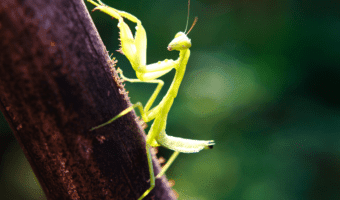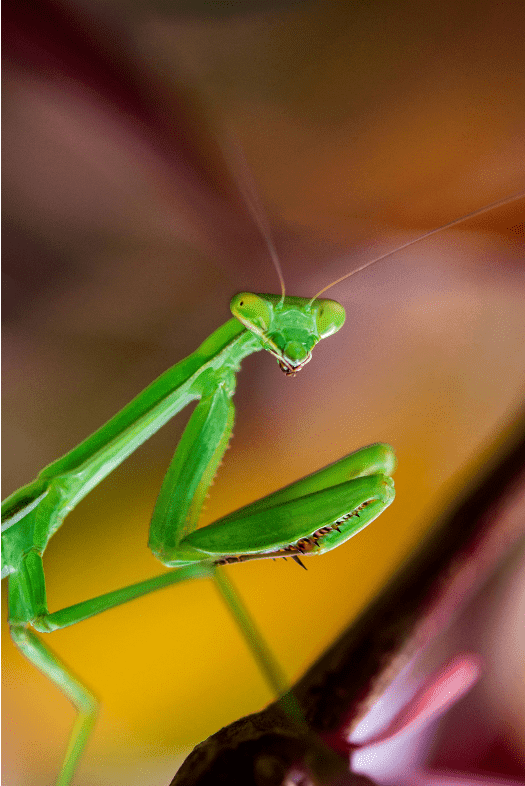It was a ordinary day. Reading about one of my all-time favorite insects...the Praying Mantis. I used to find them in my backyard when I was a young boy, but haven't found one anywhere for many years. If you ever see one... they hold their front legs close to their body as if they were praying! The insect is a notorious predator and is of the order Mantodea. There are approximately 2,000 mantid species worldwide. The majority of them are found in Asia, but there are about 20 species of the insect that are native to the USA. It has a three segmented body with a head, thorax and abdomen. The abdomen is elongated and covered by the wings in adults. Females have strong and large paired appendages on the rear-most segments.
The first segment on their thorax, the prothorax, is elongated and from it arises the modified foreleg. They have huge compound eyes mounted on a triangular head and have a large range of vision. They use sight for detecting movement of prey and swivel their heads to bring their prey into a binocular field of view. They can rotate their head 180 degrees as well as pivot it. Their antennae are used for smell. Pretty neat insect, so they are! It feeds primarily on other insects such as fruit flies, crickets, beetles, moths and bees. The larger Praying Mantis can consume a small reptile, bird or even a small mammal. To capture their prey, they use their camouflage to blend in with the surroundings and wait for the prey to be within striking distance. They then use their front legs to snatch the victim as well as position the victim so it can eat it. The Praying Mantis is found around the world in areas with mild winters and sufficient vegetation. They enjoy staying in a garden, forest or other vegetated area. Their primary predators are frogs, bats, monkeys, large birds, spiders and snakes. At times, they will prey on each other, usually during the nymph stage and during mating as well as when their is no other prey. If and when they are threatened, they stand tall and spread their forelegs to allow them to penetrate the target, with their wings fanning out wide and their mouths open. The only time they fly is when the adult female begins to emit pheromones which attracts males for mating.
Males fly at night, since they are attracted to lights. The reproductive process in a large majority of mantis species is marked by sexual cannibalism whereby the female eats the male after mating has taken place. Hey...so glad I'm not a praying mantis or I might not be typing this story today. It was another extraordinary day in the life of an ordinary guy.


No comments:
Post a Comment